Operating leverage is a financial concept that refers to the degree to which a company can increase its operating income by increasing revenue. It is a measure of how fixed and variable costs are structured within a business. Companies with high operating leverage have a larger proportion of fixed costs relative to variable costs, which means that as sales increase, the impact on profits is magnified.
Conversely, businesses with low operating leverage have a higher proportion of variable costs, leading to a more stable profit margin as sales fluctuate. The significance of operating leverage lies in its ability to amplify the effects of sales changes on profitability. For instance, if a company has high fixed costs, any increase in sales can lead to a disproportionately large increase in operating income.
This characteristic makes operating leverage a double-edged sword; while it can enhance profitability during periods of rising sales, it can also exacerbate losses when sales decline. Understanding this concept is crucial for business leaders and investors alike, as it provides insight into the risk and return profile of a company.
Summary
- Operating leverage refers to the use of fixed costs to magnify the effects of changes in sales on a company’s earnings.
- Operating leverage works by allowing a company to increase its profits when sales are rising, but also increasing its losses when sales are falling.
- Factors affecting operating leverage include the proportion of fixed costs to variable costs, the level of sales, and the pricing strategy of the company.
- Operating leverage is important as it can help a company achieve higher profits in a growing market, but can also lead to significant losses in a declining market.
- Operating leverage can be calculated using the formula: Operating Leverage = Contribution Margin / Operating Income.
How Operating Leverage Works
Operating leverage operates through the relationship between fixed and variable costs. Fixed costs remain constant regardless of the level of production or sales, such as rent, salaries, and equipment depreciation. In contrast, variable costs fluctuate with production levels, including raw materials and direct labour costs.
When a company has high fixed costs, it must achieve a certain level of sales to cover these expenses before it can start generating profit. Once this break-even point is surpassed, any additional sales contribute significantly to profit due to the relatively low variable costs associated with producing additional units. For example, consider a manufacturing company that incurs substantial fixed costs for machinery and factory space.
If this company increases its production volume, the additional units produced will primarily incur variable costs for materials and labour. As sales rise beyond the break-even point, the contribution margin—the difference between sales revenue and variable costs—will flow directly to the bottom line, resulting in a significant increase in operating income. This mechanism illustrates how operating leverage can magnify profits during periods of growth.
Factors Affecting Operating Leverage
Several factors influence the degree of operating leverage within a business. One primary factor is the nature of the industry in which the company operates. Industries characterised by high fixed costs, such as manufacturing or telecommunications, typically exhibit higher operating leverage compared to those with lower fixed costs, like retail or service-oriented businesses.
The capital intensity of an industry often dictates how much risk a company is willing to take on regarding its cost structure. Another critical factor is the company’s pricing strategy and sales volume. A business that can maintain high prices while achieving significant sales volume will likely experience higher operating leverage.
Conversely, companies that rely on low prices to drive volume may find their operating leverage diminished due to increased variable costs associated with higher production levels. Additionally, market conditions and economic cycles can impact operating leverage; during economic downturns, companies with high fixed costs may struggle more than those with flexible cost structures.
Importance of Operating Leverage
Understanding operating leverage is vital for several reasons. Firstly, it aids in financial planning and forecasting. By analysing the degree of operating leverage, management can make informed decisions about pricing strategies, cost management, and investment in fixed assets.
This understanding allows businesses to anticipate how changes in sales volume will affect profitability and cash flow. Moreover, operating leverage plays a crucial role in risk assessment. Investors and stakeholders often evaluate a company’s operating leverage to gauge its financial health and resilience in varying market conditions.
A company with high operating leverage may offer greater potential returns during periods of growth but also carries increased risk during downturns. Therefore, understanding this concept helps stakeholders make informed decisions regarding investments and resource allocation.
Calculating Operating Leverage
Calculating operating leverage typically involves determining the contribution margin and the degree of operating leverage (DOL). The contribution margin is calculated by subtracting total variable costs from total sales revenue. The DOL can be calculated using the formula: DOL = % Change in Operating Income / % Change in Sales Alternatively, it can be expressed as: DOL = Contribution Margin / Operating Income This calculation provides insight into how sensitive a company’s operating income is to changes in sales volume.
A DOL greater than one indicates that the company has positive operating leverage; as sales increase, operating income will rise at an accelerated rate. Conversely, a DOL less than one suggests negative operating leverage, where increases in sales do not significantly impact operating income. For example, if a company has a contribution margin of £200,000 and an operating income of £50,000, the DOL would be calculated as follows: DOL = £200,000 / £50,000 = 4 This indicates that for every 1% increase in sales, the company’s operating income would increase by 4%, highlighting a strong degree of operating leverage.
Examples of Operating Leverage in Business
Numerous real-world examples illustrate the concept of operating leverage across various industries. A classic case is that of airlines, which typically have high fixed costs due to aircraft acquisition and maintenance expenses. When an airline experiences an increase in passenger numbers, the additional revenue generated significantly boosts its profitability since most operational costs remain constant regardless of passenger load.
In contrast, consider a software-as-a-service (SaaS) company that operates on a subscription model. Such companies often have lower fixed costs compared to traditional businesses because they do not require extensive physical infrastructure. As they scale up their customer base, their variable costs may also rise but at a slower rate than their revenue growth.
This scenario allows SaaS companies to benefit from moderate operating leverage; while they may not experience the same dramatic profit increases as airlines during growth periods, they maintain a more stable cost structure.
Risks Associated with Operating Leverage
While operating leverage can enhance profitability during periods of growth, it also introduces significant risks that businesses must navigate carefully. One primary risk is financial distress during economic downturns or periods of declining sales. Companies with high fixed costs may find themselves unable to cover their expenses if revenues fall sharply, leading to potential bankruptcy or insolvency.
Additionally, high operating leverage can limit a company’s flexibility in responding to market changes. For instance, if a business has committed substantial resources to fixed assets and experiences a sudden drop in demand, it may struggle to adjust its cost structure quickly enough to mitigate losses. This rigidity can hinder strategic decision-making and limit opportunities for innovation or adaptation in rapidly changing markets.
Managing Operating Leverage in Business
Effectively managing operating leverage requires a strategic approach that balances risk and reward. One method is to regularly assess the cost structure of the business and identify areas where fixed costs can be reduced or converted into variable costs. For example, companies might consider outsourcing certain functions or adopting flexible staffing models that allow them to scale operations up or down based on demand.
Another strategy involves diversifying revenue streams to mitigate risks associated with high operating leverage. By expanding into new markets or developing new products, businesses can reduce their reliance on any single source of income and create more stable cash flows. Additionally, implementing robust financial forecasting and scenario analysis can help management anticipate potential fluctuations in sales and prepare contingency plans accordingly.
In conclusion, understanding and managing operating leverage is essential for businesses aiming to optimise profitability while minimising risk exposure. By carefully analysing their cost structures and market conditions, companies can harness the benefits of operating leverage while safeguarding against its inherent risks.
Operating leverage is a key concept in business finance, and understanding its implications can greatly impact a company’s profitability. In a related article on how credit card payments can benefit your business, the importance of leveraging financial tools to maximise revenue is highlighted. Just as operating leverage can magnify profits in a business, using credit card payments can streamline transactions and increase cash flow. Both concepts demonstrate the power of strategic financial decisions in driving business success.
FAQs
What is operating leverage?
Operating leverage refers to the degree to which a company’s operating costs are fixed rather than variable. It measures the impact of changes in sales on a company’s operating income.
How is operating leverage calculated?
Operating leverage is calculated using the following formula: Operating Leverage = Contribution Margin / Operating Income.
What is the significance of operating leverage?
Operating leverage is significant because it helps to understand how changes in sales volume can impact a company’s profitability. A high operating leverage means that a small change in sales can have a significant impact on operating income, while a low operating leverage means that a larger change in sales is needed to have the same impact.
What are the types of operating leverage?
There are two types of operating leverage: 1. High operating leverage, where a company has a high proportion of fixed costs, and 2. Low operating leverage, where a company has a high proportion of variable costs.
How does operating leverage affect a company’s risk?
Operating leverage can affect a company’s risk because a high operating leverage means that the company is more sensitive to changes in sales volume, which can increase the risk of financial distress if sales decline. Conversely, a low operating leverage means that the company is less sensitive to changes in sales volume, which can reduce the risk of financial distress.
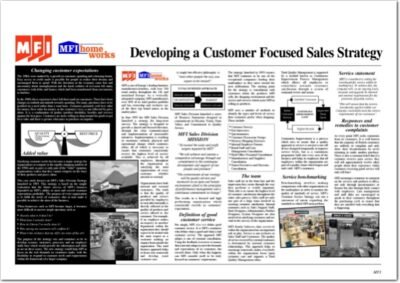 Developing a customer focused sales strategy (PDF)
Developing a customer focused sales strategy (PDF) 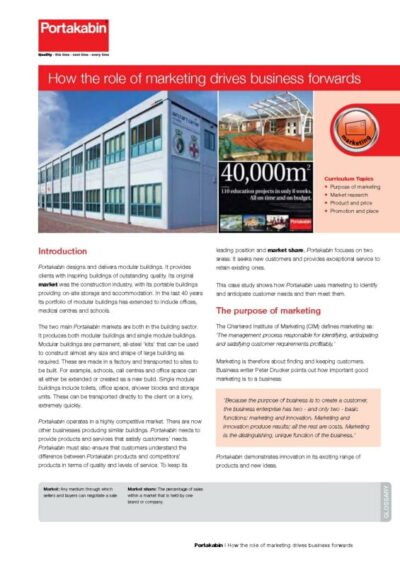 How the role of marketing drives business forwards (PDF)
How the role of marketing drives business forwards (PDF) 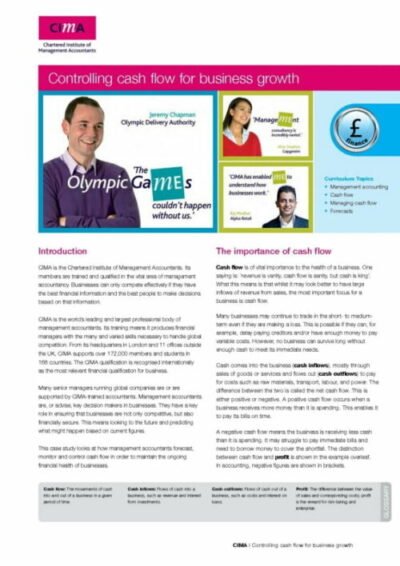 Controlling cash flow for business growth (PDF)
Controlling cash flow for business growth (PDF) 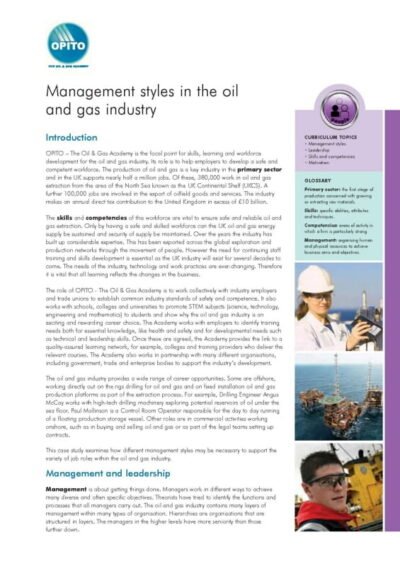 Management styles in the oil and gas industry (PDF)
Management styles in the oil and gas industry (PDF)  Vision, values and business strategies (MP3)
Vision, values and business strategies (MP3) 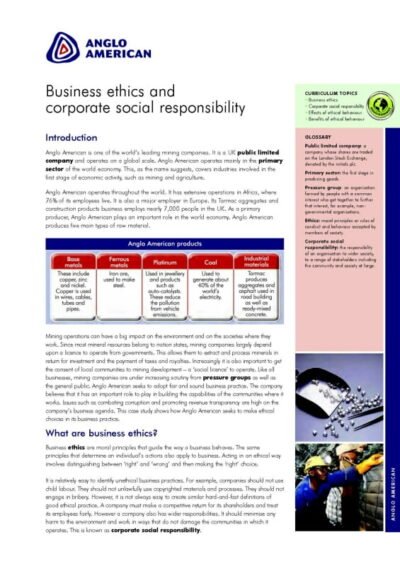 Business ethics and corporate social responsibility (PDF)
Business ethics and corporate social responsibility (PDF)  Developing the skills for managing change (PDF)
Developing the skills for managing change (PDF) 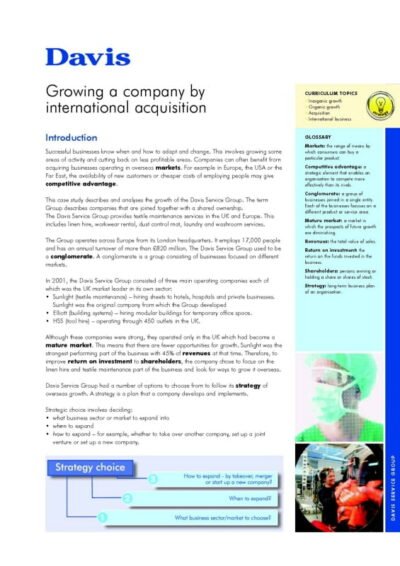 Growing a company by international aquisition (PDF)
Growing a company by international aquisition (PDF)  Vision, values and business strategies (PDF)
Vision, values and business strategies (PDF) 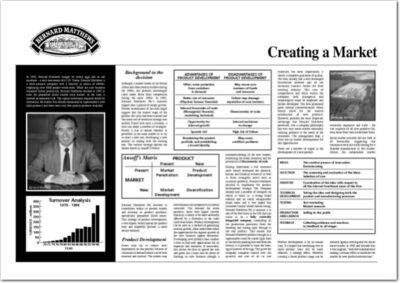 Creating a market (PDF)
Creating a market (PDF) 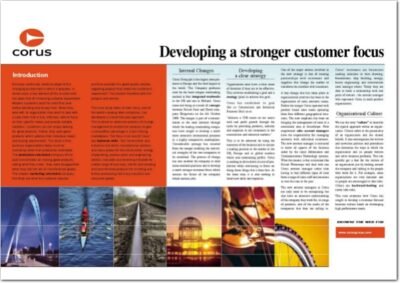 Developing a stronger customer focus (PDF)
Developing a stronger customer focus (PDF) 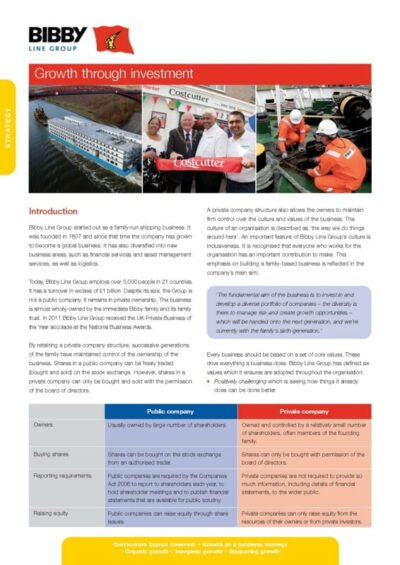 Growth through investment (PDF)
Growth through investment (PDF) 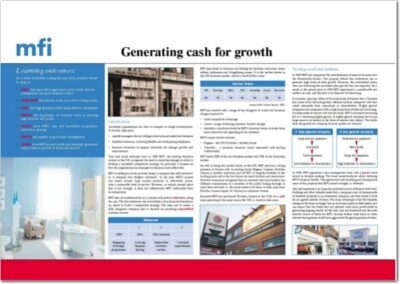 Generating cash for growth (PDF)
Generating cash for growth (PDF) 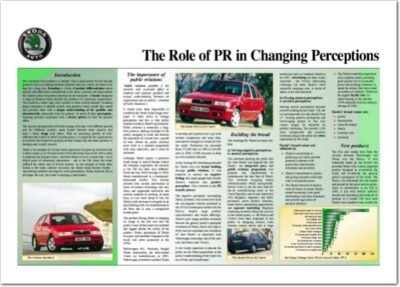 The role of PR in changing perceptions (PDF)
The role of PR in changing perceptions (PDF) 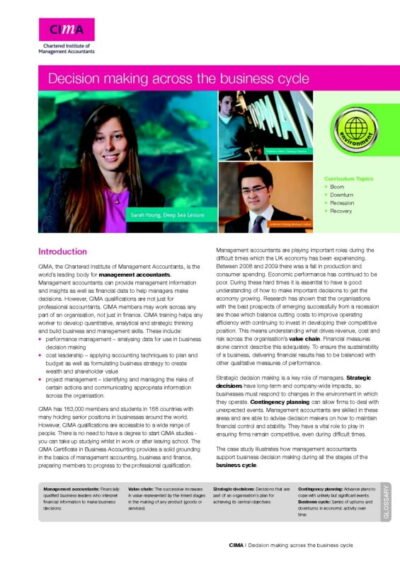 Decision making across the business cycle (PDF)
Decision making across the business cycle (PDF) 

